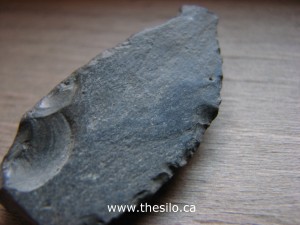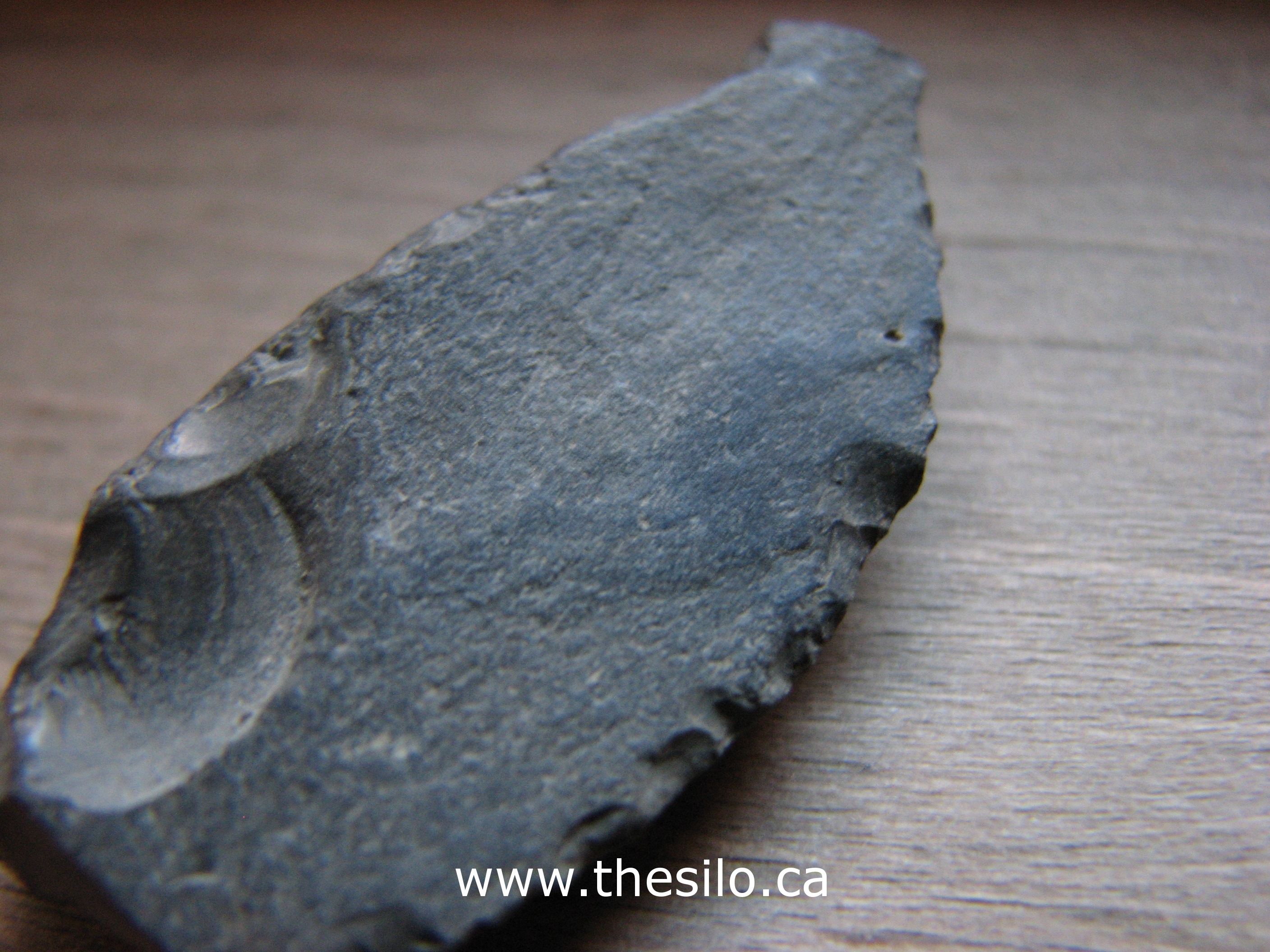
This stone shows signs of ancient human manufacture. Percussive bulbs result from being hammered and chipped, and facial flaking along the sides are strong indicators. It was retrieved in April 2010 from the then drained shoreline of Silver Lake millpond in Port Dover, Ontario. In the vicinity of the stone were animal bones and glacial till.
According to Ontario’s Heritage Act– municipalities must
- Provide clear standards and guidelines for the preservation of provincial heritage properties.
- Enhance protection of heritage conservation districts, marine heritage sites and archaeological resources.
Even when cultural artifacts are not immediately discovered, a cultural assessment must take place to establish any archaeological remains. The Cayuga Bridge construction project was delayed due to this requirement.

Thank you for commenting Steve We have removed the names from your comment but will forward along your requests to those parties. Also- if you images you would like to share and perhaps any information about your discoveries please send those along to contentproducer@thesilo.ca Cheers
We have removed the names from your comment but will forward along your requests to those parties. Also- if you images you would like to share and perhaps any information about your discoveries please send those along to contentproducer@thesilo.ca Cheers
Yes, that’s the one variety of Upper Mercer chert that appears most commonly in the older cultural sites I’ve come across. I find that to be a very intriguing looking piece, but I would like to see the other face of this artifact. The piece reminds me of a piece that I found many years ago in a low mucky area next to a paleo-indian site region at a Kettle Pond well inland in southern Ontario; a piece that is extremely patinated and not like any other lithic artifact I’ve ever found.
I wouldn’t suggest that this tool was as ‘expedient’ as Lorenz suggests. Look at the heavy wear along the edge at the left side. That’s not ‘expedient’ use and discard. It was used for quite a while and who knows whether it was ‘discarded’ or set down and forgotten to be retrieved? Anyway, post a pic of the other side of that piece so that we can see that.
Too bad that I can’t post pics here, because I’d post a pic of a very intriguing complete Upper Mercer point that I found at a very important site near Long Point a few years back. Nicest point I’ve ever found, and one that still baffles me in terms of its age. It is most like Pfufer’s ‘stemmed square-based’ lanceolate points, which is definitely of paleo in age. Justice also shows an ‘eared Scottsbluff’ illustration that looks much like this point I found. It is on the ‘slate black’ variant of Upper Mercer chert, exactly like the material of the artifact you show here. I have some other pieces made on that same variety of Upper Mercer chert — all are very early pieces.
I think you have a very interesting and potentially important artifact here.
regards,
Steve
The stone tool is made with Upper Mercer chert found at the western end of Lake Erie in Ohio. The edges are slightly chipped either from use-wear or purposely done to create a serrated cutting edge, but was a temporary/expedient tool as it was discarded shortly after use. Likely removed from a bifacial core that was transported with a nomadic group carrying the chert with them.
This looks like a paleolithic knife. The edge is flaked to create a cutting edge and the tip looks like it might have been broken. The tip could have been used as a piercer. The two circle marks on the left side show that this stone was smacked by something- maybe an antler or a bone. Definitely something going on here. There needs to be an archeaological assessment of that area. Compare the marks with this example: http://bandstex.globat.com/Site/Paleo/paleo%20artifact%2048.jpg